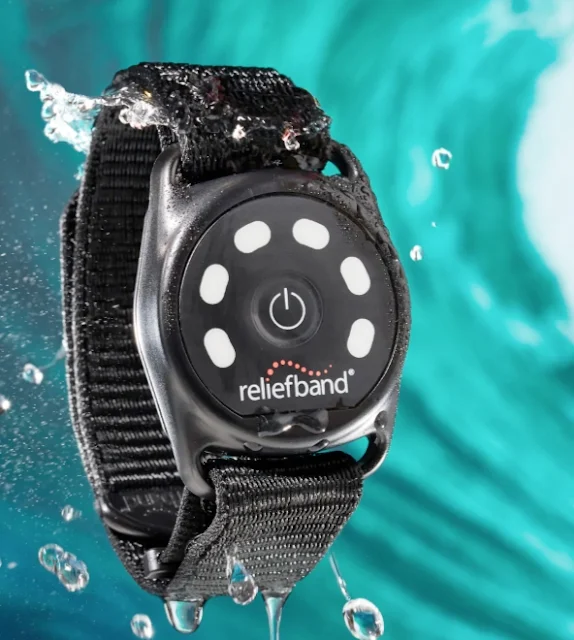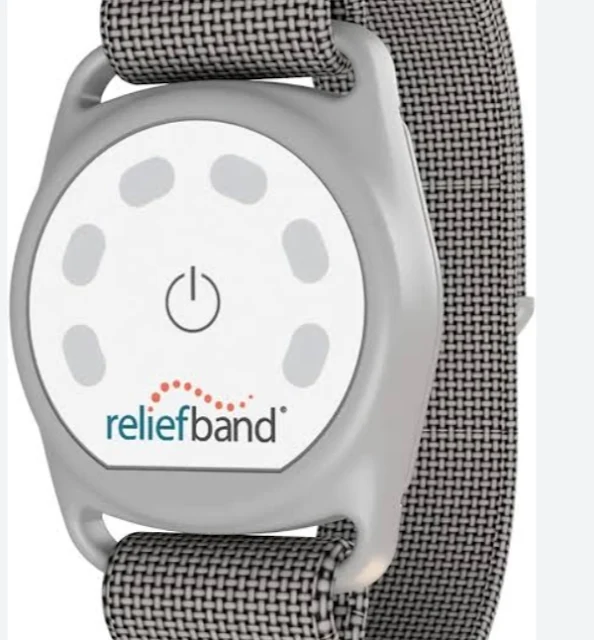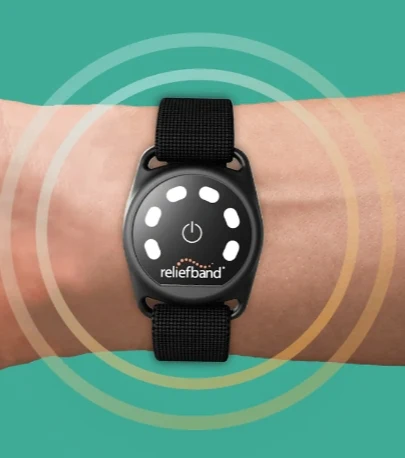Reliefband for Anxiety: A Historical Timeline
Reliefband's story goes beyond just nausea relief. They've expanded their product line to address anxiety symptoms. Here's a timeline highlighting key moments in Reliefband's development of this innovative product:
Reliefband for Anxiety: A Historical Timeline table
Year Milestone Reliefband for Anxiety Features 2010 Reliefband is founded. - 2013 Reliefband Classic receives FDA clearance for treating nausea and vomiting associated with post-surgical and chemotherapy (CINV). - 2014 Reliefband Sport receives FDA clearance for treating nausea and vomiting associated with motion sickness. - Unknown Reliefband begins research and development of Reliefband for Anxiety. - 2019 Reliefband for Anxiety is launched commercially, featuring acupressure technology. • Uses acupressure to target acupoints associated with anxiety relief
Note: The exact dates for Reliefband's research and development of Reliefband for Anxiety are not publicly available.
Reliefband's story goes beyond just nausea relief. They've expanded their product line to address anxiety symptoms. Here's a timeline highlighting key moments in Reliefband's development of this innovative product:
Reliefband for Anxiety: A Historical Timeline table
| Year | Milestone | Reliefband for Anxiety Features |
|---|---|---|
| 2010 | Reliefband is founded. | - |
| 2013 | Reliefband Classic receives FDA clearance for treating nausea and vomiting associated with post-surgical and chemotherapy (CINV). | - |
| 2014 | Reliefband Sport receives FDA clearance for treating nausea and vomiting associated with motion sickness. | - |
| Unknown | Reliefband begins research and development of Reliefband for Anxiety. | - |
| 2019 | Reliefband for Anxiety is launched commercially, featuring acupressure technology. | • Uses acupressure to target acupoints associated with anxiety relief |
Note: The exact dates for Reliefband's research and development of Reliefband for Anxiety are not publicly available.
Reliefband for Anxiety: Pros, Cons, and What to Know
Reliefband is a wearable device marketed to help manage anxiety. It works by delivering mild electrical pulses to your wrist. But is it effective? Here's a look at the science and some key considerations.
How Reliefband Works
Reliefband sends a gentle electric pulse to a pressure point on your wrist called the P6. This point is located on the median nerve, which transmits signals to your brain. The theory is that the pulses disrupt the anxiety signals traveling through the nerve.
Can Reliefband Help with Anxiety?
The evidence on Reliefband's effectiveness for anxiety is inconclusive. While it's FDA-cleared for nausea and vomiting, research on anxiety is limited. Some studies show promise, but more research is needed.
Pros and Cons of Reliefband for Anxiety
| Feature | Pro | Con |
|---|---|---|
| Mechanism | Drug-free | Not a cure for anxiety |
| Effectiveness | May offer some relief | Limited research |
| Use | Non-invasive and portable | May not work for everyone |
| Cost | Convenient | Can be expensive |
Overall, Reliefband might be worth trying for some people with anxiety. However, it's important to talk to your doctor before using it to see if it's right for you.
Additional Considerations
- Consult your doctor before using Reliefband, especially if you have concerns.
- Reliefband may not be suitable for everyone, such as people with pacemakers or other implanted devices.
Reliefband for Anxiety: Can AR Technology Enhance Its Effectiveness?
Reliefband is a wearable device that uses electrical pulses to target the median nerve in your wrist, aiming to alleviate anxiety. While it shows promise, research is inconclusive. Could Augmented Reality (AR) technology elevate Reliefband's effectiveness? Let's explore the possibilities.
Traditional Reliefband
- Delivers mild electrical pulses to the P6 pressure point on your wrist.
- Theory: Disrupts anxiety signals traveling through the median nerve.
- Effectiveness: Limited research, some studies show promise for reducing anxiety.
Potential Benefits of AR-integrated Reliefband
| Feature | Benefit | Example |
|---|---|---|
| Distraction Techniques | AR overlays could display calming visuals or interactive games to distract users from anxious thoughts. | Imagine calming ocean scenes or a virtual aquarium to focus on. Alternatively, users could play simple AR games to divert their attention. |
| Relaxation Techniques | AR could guide users through breathing exercises or meditation visualizations. | AR overlays could visually demonstrate proper breathing techniques or project calming environments for meditation, such as a serene mountain vista. |
| Progress Tracking | AR could monitor anxiety levels (through metrics like heart rate) and provide feedback on Reliefband's effectiveness over time. | Users could see graphs or charts within the AR display that track their anxiety levels over the course of using Reliefband. This could help them assess the device's effectiveness for their individual needs. |
| Educational Content | AR could deliver educational content about anxiety and coping mechanisms. | AR overlays could display information about different types of anxiety, relaxation techniques, and even mindfulness exercises, all accessible through the Reliefband. |
Challenges and Considerations
- Technical feasibility: Integrating AR technology seamlessly with Reliefband might require design and engineering hurdles.
- Cost: AR integration could significantly increase Reliefband's price.
- User experience: AR features should be user-friendly and not overwhelm users experiencing anxiety.
AR integration has the potential to make Reliefband more effective and engaging for managing anxiety. However, technical limitations, cost considerations, and user experience design require careful attention.
Current Status
There's no commercially available Reliefband with AR technology at this point. Further research and development are needed to determine its feasibility and efficacy.
Table: Traditional Reliefband vs. Potential AR-integrated Reliefband
| Feature | Traditional Reliefband | Potential AR-integrated Reliefband |
|---|---|---|
| Mechanism | Electrical pulses | Electrical pulses + AR features |
| Focus | Disrupting anxiety signals | Disrupting anxiety signals + tailored interventions (distraction, relaxation, etc.) |
| Availability | Commercially available | Not commercially available (theoretical) |
Disclaimer: I am not a medical professional. This article is for informational purposes only and should not be interpreted as medical advice.
Reliefband for Anxiety: FAQs
Reliefband is a wearable device designed to help reduce nausea and anxiety.
How Does Reliefband Work for Anxiety?
- Neurostimulation: Reliefband uses a mild electrical pulse to stimulate a specific nerve in your wrist.
This stimulation can help regulate the body's response to stress and anxiety. - Reduced Nausea: While primarily designed for nausea, the same stimulation can also help alleviate anxiety-related symptoms, such as feeling queasy or having a racing heart.
Is Reliefband Effective for Anxiety?
- Individual Results: The effectiveness of Reliefband can vary from person to person. Some individuals may experience significant relief from anxiety symptoms, while others may not
see noticeable improvements. - Complementary Therapy: Reliefband is often used as a complementary therapy alongside other anxiety management techniques, such as therapy or medication.
How Long Does it Take for Reliefband to Work?
- Immediate Relief: Some users report experiencing immediate relief from anxiety symptoms after wearing Reliefband.
- Consistent Use: For optimal results, it's recommended to wear Reliefband consistently over time.
Are There Any Side Effects to Using Reliefband?
- Minimal Side Effects: Reliefband is generally considered safe with minimal side effects.
Some users may experience mild skin irritation or discomfort at the wristband site.
How Often Should I Wear Reliefband for Anxiety?
- As Needed: You can wear Reliefband as needed, especially during times of heightened anxiety or stress.
- Consistency: Consistent use may lead to better results.
Can I Use Reliefband with Other Anxiety Medications?
- Consult a Doctor: It's essential to consult with your doctor before using Reliefband if you're taking any anxiety medications. They can advise you on whether it's safe to use both.
Remember: Reliefband is a tool that can help manage anxiety symptoms.




